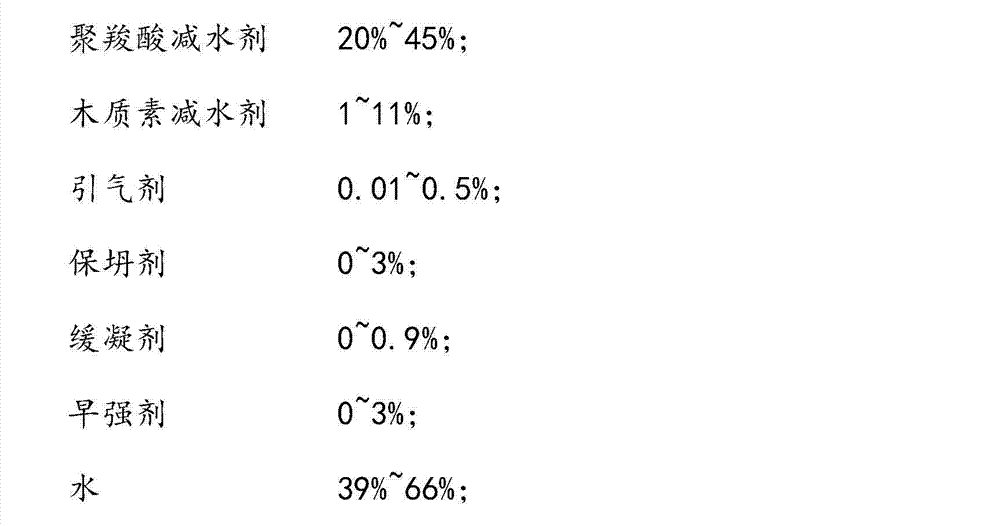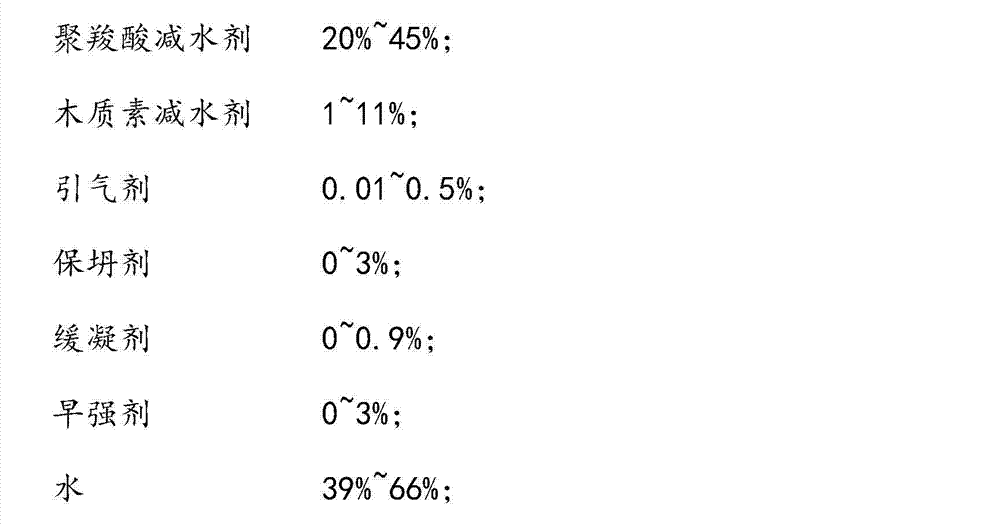Polycarboxylic acid-lignin composite additive
A polycarboxylic acid and lignin technology, applied in the field of concrete admixtures, can solve the problems of incompatibility between naphthalene-based water-reducing agent and polycarboxylate water-reducing agent, and achieve the improvement of concrete quality, water reduction rate and cost reduction. Effect
- Summary
- Abstract
- Description
- Claims
- Application Information
AI Technical Summary
Problems solved by technology
Method used
Image
Examples
Embodiment 1
[0024] In percent by weight: polycarboxylate superplasticizer (mass solid content: 20%) 38.5%, lignin superplasticizer 11%, air-entraining agent 0.1%, slump-retaining agent 2%, retarder 0.6%, water 47.8 %, add to the stirring tank in turn, and mix well to get this product. Adding this admixture accounting for 1% of the weight of cement can make the fluidity of the cement slurry with a water-cement ratio of 0.35 be 190mm. Adding 1% of the admixture to the concrete, the water-reducing rate of the concrete is 17%, the slump loss is 10mm in 1 hour, the setting time is extended for 2 hours, and the compressive strength ratio reaches 120% in 28 days.
Embodiment 2
[0026] In terms of weight percentage ratio: polycarboxylate water reducer (mass solid content is 20%) 45%, lignin water reducer 5%, air entraining agent 0.1%, early strength agent 2%, tap water 47.9%, add to Stir the tank, mix evenly to get this product. Adding this admixture accounting for 1.2% of the weight of cement can make the fluidity of the cement paste with a water-cement ratio of 0.35 be 210mm. Adding this admixture accounting for 1.2% of the total weight of the cementitious material in the concrete, the water-reducing rate of the concrete is 19%, the slump loss in 1 hour is 15mm, the 7-day compressive strength ratio is 130%, and the 28-day compressive strength ratio is 130%. is 115%.
PUM
 Login to View More
Login to View More Abstract
Description
Claims
Application Information
 Login to View More
Login to View More - R&D
- Intellectual Property
- Life Sciences
- Materials
- Tech Scout
- Unparalleled Data Quality
- Higher Quality Content
- 60% Fewer Hallucinations
Browse by: Latest US Patents, China's latest patents, Technical Efficacy Thesaurus, Application Domain, Technology Topic, Popular Technical Reports.
© 2025 PatSnap. All rights reserved.Legal|Privacy policy|Modern Slavery Act Transparency Statement|Sitemap|About US| Contact US: help@patsnap.com


